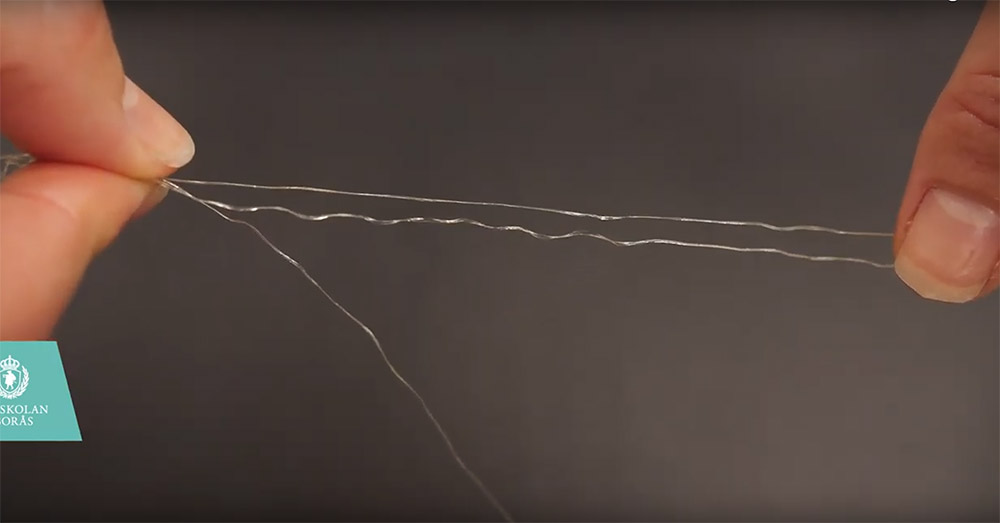A new way to recycle waste: Mold that grows on food waste can provide raw materials for imitation leather, paper or cotton substitutes. Because fungi produce fibers from chitin and chitosan, from which stable tissues can be produced. Depending on how it is processed, its properties are similar to ordinary leather, paper or fabric. Thanks to the special breeding method, the production of mushroom fibers is also fast and does not require any additives harmful to the environment.
Whether it’s cotton, leather, imitation leather, or paper: many of the materials used today for textiles and other fabric-like fabrics cause major environmental problems. For example, the cultivation and processing of cotton and paper production consume large amounts of water, and animals have to die for leather and synthetic leather made from petroleum products. All materials also use chemicals that are harmful to the environment.
Mold as raw material supplier
In search of an alternative, Akram Zamani of Boras University in Sweden and her team brought in an assistant from the fungal kingdom – the mold Rhizopus delemar. This close relative of the bread mold also grows on bread and food waste of all kinds, creating a dense network of microscopically fine fungal hyphae. These fungal fibers are usually soft and not very flexible.
However, Rhizopus delema is different: its fungal hyphae contain a relatively high content of chitin and chitosan in their cell walls. These biopolymers make the shells of insects and crustaceans hard and stable, and they also give the fungal hyphae a high level of resistance, Zamani and colleagues discovered. This gave her the idea to use these die-casting yarns as a raw material for leather, paper, and textiles.
Leftover bread becomes threads of mushrooms
To produce the needed fibre, the researchers collected stale, unsold bread from supermarkets that would usually end up in the trash. They chopped it up and dried it before putting it in a bioreactor with the fungal spores. There the mushrooms grew in a kind of nutrient solution made of water and breadcrumbs. After two days, the researchers removed the filamentous fungal mass and removed lipids, proteins and other cell components so that only a gel-like mass of chitin and chitosan-containing cell walls remained of the fungal fibers.
“When developing our process, we took care not to use any toxic chemicals or other environmentally harmful processes,” Zamani stresses. The fibers, freed from the remnants of the fungus, can then be spun into sutures while still damp, which can be used, for example, in surgery as sutures or wound healing dressings. These mushroom woven fabrics can also be used as an alternative to regular cotton fabrics.
Leather and paper made of mushrooms
However, mushroom fibers can also be rolled, dried and processed into a kind of paper. This is as tear resistant as regular cellulose paper. A type of leather can also be made from a mushroom material, applied in several layers and intermediate layers of wood-derived tannin. Unlike other methods of producing skin-like materials from fungal materials, this method does not require the addition of synthetic polymers, the team explains.
The resulting mushroom skin is just as strong and flexible as classic animal skin: “Our tests show that this mushroom skin has mechanical properties close to those of normal leather,” according to a Zamani report. Also, bio-binders and post-treatment with glycerol make the material softer and more durable.
Other “mushroom foods” are also possible
According to the research team, the use of Rhizopus delema mold opens up new opportunities for the production of biological and environmentally friendly materials. “We hope that these fungal-derived materials will replace cotton, synthetic fibers and animal hides, which have associated ethical and environmental issues,” Zamani says.
Scientists are already working on improving mushroom products. They’ve also started feeding the mold with other food scraps like fruit and vegetable scraps as well. “Instead of getting rid of these leftovers, you can use them to grow mushrooms,” Zamani says. (ACS Spring 2022)
Source: American Chemical Society

“Alcohol buff. Troublemaker. Introvert. Student. Social media lover. Web ninja. Bacon fan. Reader.”






More Stories
Ability to innovate: Research has not lost any of its innovative power
Hypertension, Diabetes & Co: Four Types of Sleep That Often Make You Sick – The World of Sleep
The Academy of Sciences has 34 new members